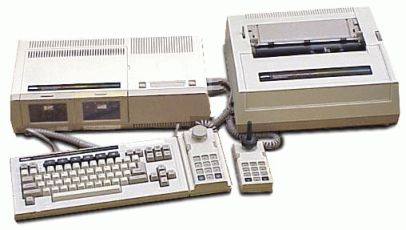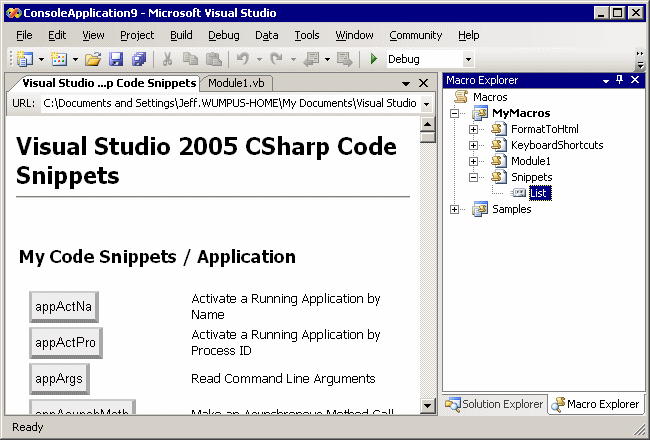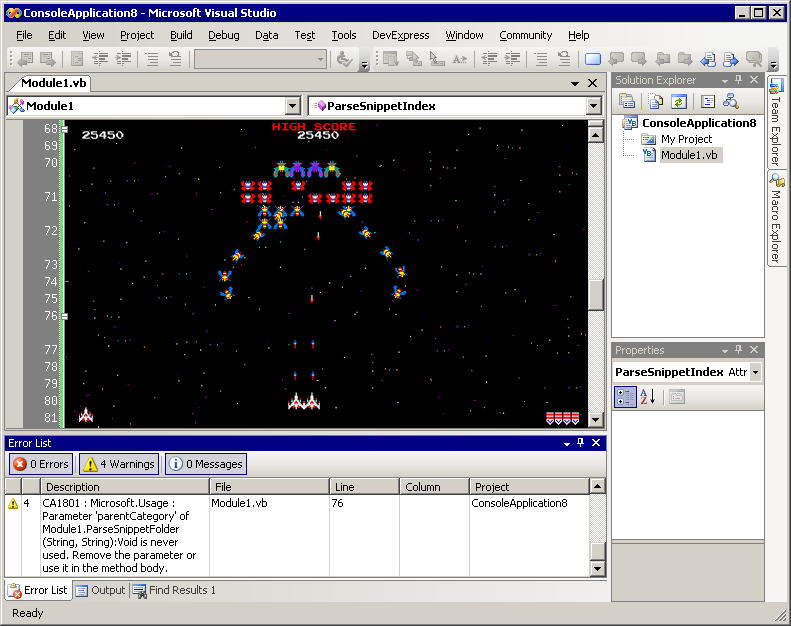My second true computer, after the TI-99/4a, was the Coleco Adam:

I remember waiting in line in the snow with my Dad to get our hands on one of the first ADAM computers. Oh, the awful SmartBASIC programs I would write! I spent hours and hours hacking away in that terrible AppleBASIC clone. And loving every minute of it.
But the ADAM had some serious drawbacks:
-
The world's loudest daisywheel printer. It was loud when powered on doing nothing. You know that's a bad sign. When it was printing, it was quite literally deafening. I kept a towel nearby to toss over it while it was printing, otherwise nobody in the room, myself included, could think straight. All this for a whopping 10 characters per second.
-
Cassette tape drives. Okay, they weren't technically cassette tapes, they were fancy 256 kilobyte "custom data packs". Man, were these things slow. I could handle the slowness, but they also had a very unfortunate tendency to unspool. And when you've spent the last week writing the ultimate tank combat game – which happens to be stored on that unspooled tape – you develop some serious tape surgery skills, stat. I must have reconstructed those data packs fifteeen times over.
As with so many computers of my youth, I quickly outgrew it, moving on to the Apple //c. Coleco discontinued the ADAM in 1985, barely two years later.
Though it was never a particularly good computer by any objective measure, some people never gave up on the ADAM. Richard Drushel delivered this incredible, poignant speech at ADAMcon 7 in 1995, nearly ten years after the official death of the ADAM:
In 1995, if you are an active ADAM programmer, like me, there is no way that you can be doing it for hope of financial gain – by now, there's none to be had. I'm an ADAM programmer because I'm intrinsically interested in the ADAM. I write software for me, and if other people find it useful, that's great, but I'll program whether anybody else cares about what I'm doing or not. For me, it's been fun (though often challenging and frustrating) to learn about how the ADAM works, and how to make it do interesting things.
Unfortunately, I have not found many other people like me in the ADAM community. There aren't many of us programmers left, for a variety of personal and professional reasons. I don't believe you need a Ph.D. in order to learn how to write your own software in SmartBASIC or even assembler, but most of you out there believe otherwise; and I can't overcome the strength of your belief. There are many practical benefits to doing your own programming, not the least of which is that you can make your program do exactly what you want it to do. More important nowadays, however, is that ADAM programming skills can be part of your maintenance toolkit. If all the ADAM newsletters disappear, all the ADAM BBSes go off-line, no more ADAMcons are held, and you can't find anybody else who has an ADAM, then you, like Robinson Crusoe, can be self-sufficient on your own desert island. For me, that is an important motivation – because I'm really worried that the ADAM is about to become a desert island.
I don't remember how I found that speech. It must have been in 1996 or 1997 that I stumbled across it in some random pre-Google internet search. But I was completely unprepared for the depth of emotion and attachment people had developed for what was, at best, a footnote in computing history.
It's sad and irrational, yet oddly inspiring. Perhaps, as Richard points out, it isn't about the ADAM, but the people:
The ADAMcons are a public service to the ADAM community. They aren't supposed to turn a profit, but they have to break even. In order to break even, there has to be a certain critical mass of attendees. In order to make it worth someone's while, or some users group's while, to put effort into planning and running an ADAMcon, you'd like to see a little more than the bare minimum attendance. But I'm not sure that it's reasonable to expect much attendance at all. Already, the evidence is clear that there are not enough dollar votes to support new ADAM hardware and software development. What's the attraction of yet another ADAMcon? There won't be much new to see, the sessions will be pretty much the same as they've always been, most of the big-name personalities from the first 5 years of ADAM have moved on to other things, so those of you who like to hobnob with royalty will find only Johnny-come-latelies like me. Unless this is your first or second ADAMcon, everything is as familiar as an old shoe, only the city and hotel are different. Is it really worth $250 US for the same hamburger in a different bun?
Well, it must be, since all of you are here now. Unless you are a first-timer just discovering that there is a wider ADAM world, like me at ADAMcon 04, you must admit that the ADAM per se is only a flimsy excuse for your attendance this year. The real reason you're here is social. At past ADAMcons, or via now- defunct newsletters, or through now-disconnected BBSes, you met people who have become your friends. The ADAM brought you together, originally for some concrete and practical purpose (such as, you wrote some software that I want to buy), but now the ADAM connection is a historical artifact. Some of you would keep in touch whether there were still ADAMcons or not, whether you ever used your ADAMs again or not.
In case you were wondering, ADAMCon 2006 is in Chicago.
Discussion

